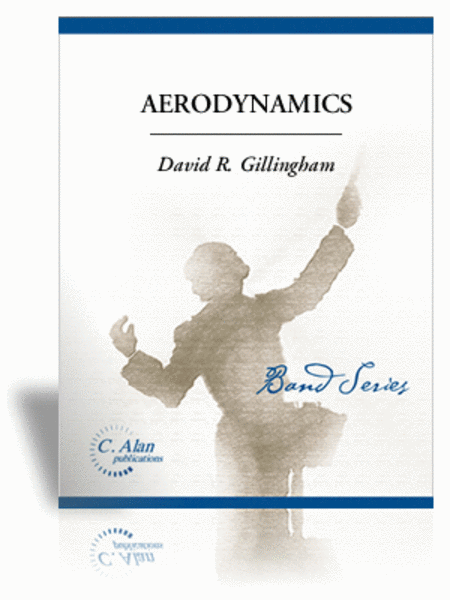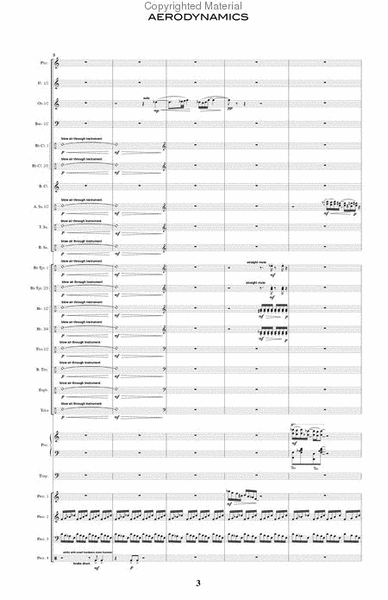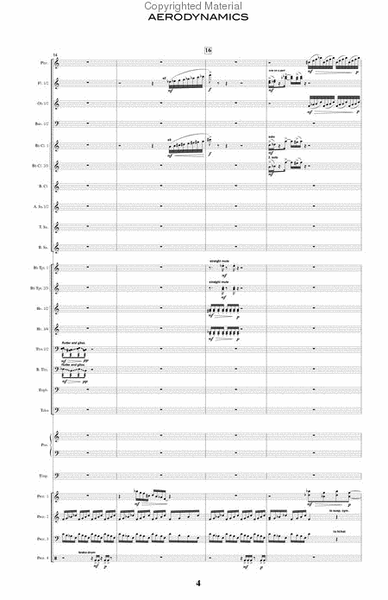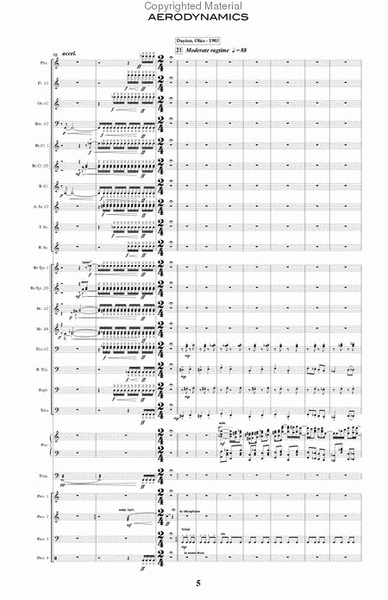Aerodynamics
-
Ships in 3 to 4 weeks
Details
Description
SKU: CN.08391
Composed by David Gillingham. Score only. Duration 8:30. Published by C. Alan Publications (CN.08391).Using motives from Joplin's Weeping Willow Rag, this programmatic work takes you back to the time of the Wright brothers. The sounds of the planes being built, nostalgic ragtime music, and the soaring lines when flight became a reality are all captured here.
Aerodynamics was commissioned by the members of the Sinclair Community College Community Bands, conducted by Kenneth Kohlenberg, on the occasion of their Twenty-fifth Anniversary Season. Since the event coincides with the 100th Anniversary of the invention of flight by the Wright Brothers, I thought it would be appropriate to compose a work that honors that occasion. The result is a work that is entirely celebratory in nature, celebrating man's technological invention and creativity. It is cast in six sections: 1) Invention, 2) Dayton, Ohio, 1903, 3) The Wright Brothers, 4) Construction, 5) Flight, and 6) Celebration. Each of these sections intentionally alludes to its programmatic content. In the first section, "Invention," there is a sense of the unknown and anticipation. Particularly noticeable are the wind noises that allude to "flight." The motivic material is taken from Scott Joplin's Weeping Willow Rag, written in 1903, the year of the first successful flight. Throughout the section the piano hints at the ragtime style and segues into the second section, "Dayton, 1903,' where the second strain of the rag is played out on the piano, followed by the flute and alto saxophone playing the first strain. Hopefully, the listener will be aurally transformed into the year 1903, when ragtime was in vogue. The third section, "The Wright Brothers," unfolds a new and dramatic theme that captures the spirit and importance that the Wright Brothers brought to America with their invention of flight. The middle of this section is interrupted with the first strain of the "Weeping Willow Rag," followed by a reprise of the "Wright Brother's theme." "Construction" makes reference to the building of the airplane that would later prove successful in flight. The Wrights built the plane in the back of their bicycle shop in Dayton, Ohio. There is pounding on metal and wood and the constant ticking of time throughout the entire section and a smattering of motives from the "Weeping Willow Rag." The ensuing section is a musical depiction of the first successful "flight". The wind noise returns along with ascending and descending chromatic passages in the woodwinds and brass. Underscoring the section are hints of the "Wright Brother's theme." The section grows in texture and strength and segues into the final section, "Celebration," where the "Wright Brother's theme" returns in a glorious and celebratory fashion and drives to a resounding conclusion. -DRG.




 Share
Share